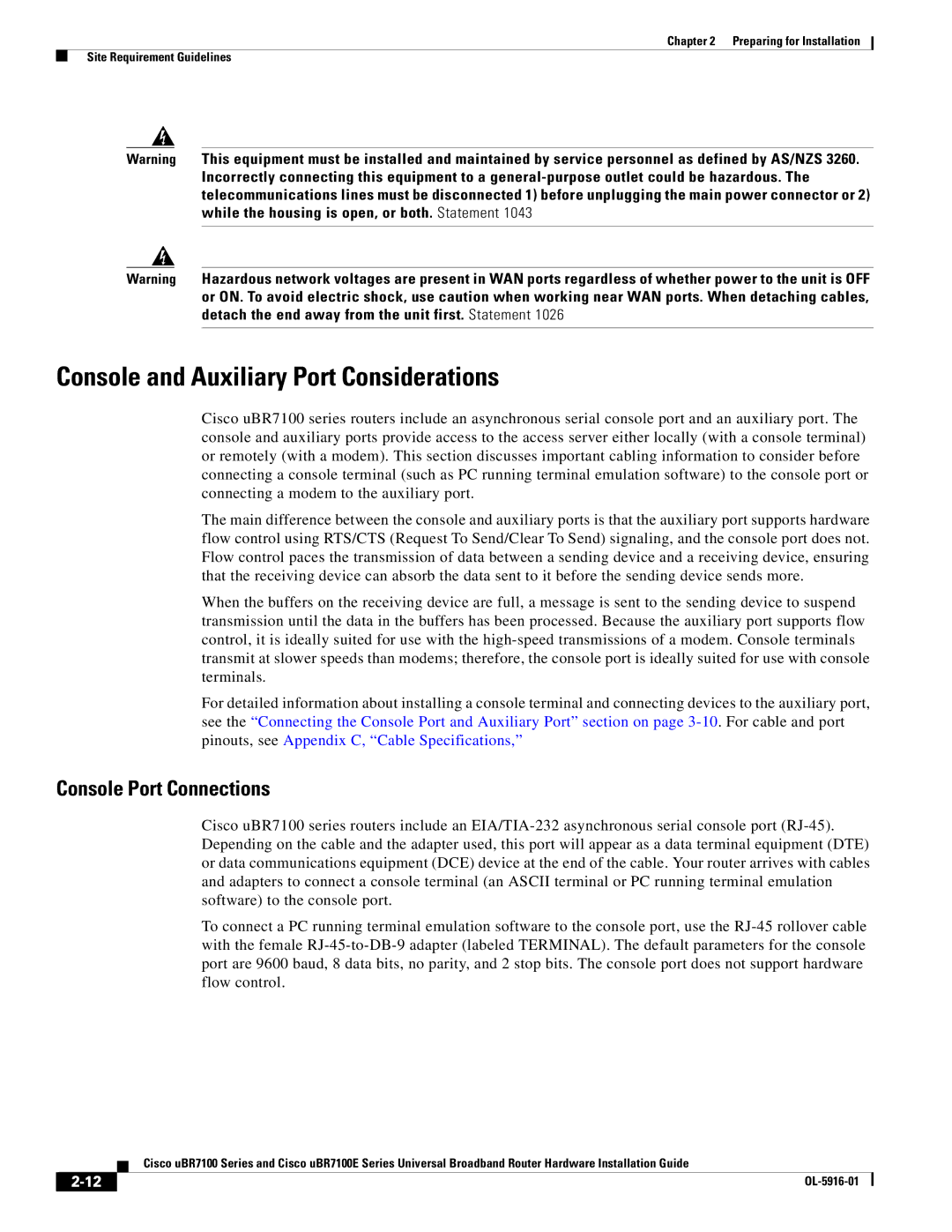
Chapter 2 Preparing for Installation
Site Requirement Guidelines
Warning This equipment must be installed and maintained by service personnel as defined by AS/NZS 3260. Incorrectly connecting this equipment to a
Warning Hazardous network voltages are present in WAN ports regardless of whether power to the unit is OFF or ON. To avoid electric shock, use caution when working near WAN ports. When detaching cables, detach the end away from the unit first. Statement 1026
Console and Auxiliary Port Considerations
Cisco uBR7100 series routers include an asynchronous serial console port and an auxiliary port. The console and auxiliary ports provide access to the access server either locally (with a console terminal) or remotely (with a modem). This section discusses important cabling information to consider before connecting a console terminal (such as PC running terminal emulation software) to the console port or connecting a modem to the auxiliary port.
The main difference between the console and auxiliary ports is that the auxiliary port supports hardware flow control using RTS/CTS (Request To Send/Clear To Send) signaling, and the console port does not. Flow control paces the transmission of data between a sending device and a receiving device, ensuring that the receiving device can absorb the data sent to it before the sending device sends more.
When the buffers on the receiving device are full, a message is sent to the sending device to suspend transmission until the data in the buffers has been processed. Because the auxiliary port supports flow control, it is ideally suited for use with the
For detailed information about installing a console terminal and connecting devices to the auxiliary port, see the “Connecting the Console Port and Auxiliary Port” section on page
Console Port Connections
Cisco uBR7100 series routers include an
To connect a PC running terminal emulation software to the console port, use the
Cisco uBR7100 Series and Cisco uBR7100E Series Universal Broadband Router Hardware Installation Guide
|
| |
|
